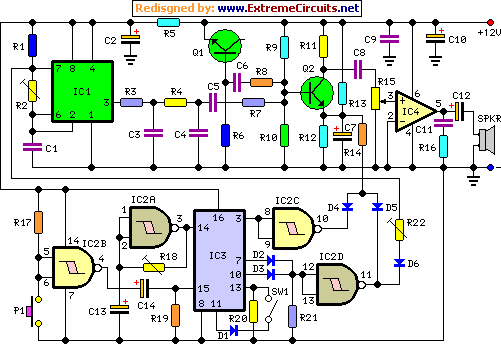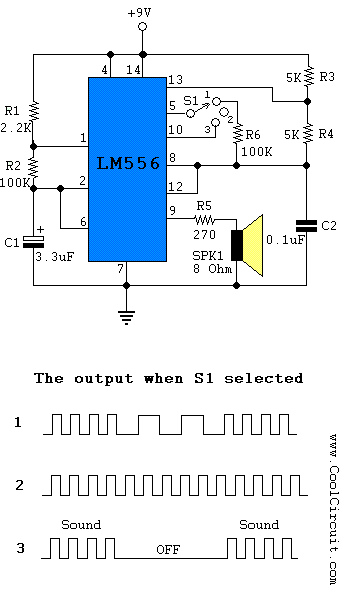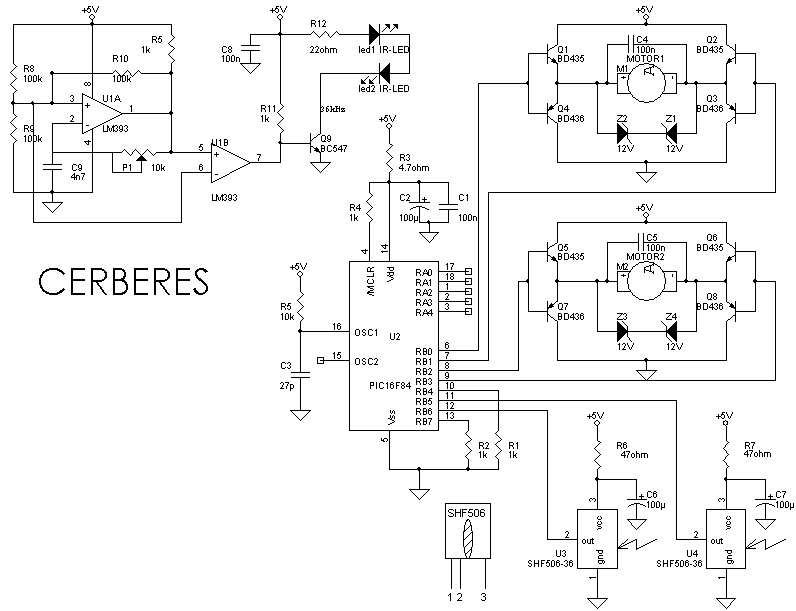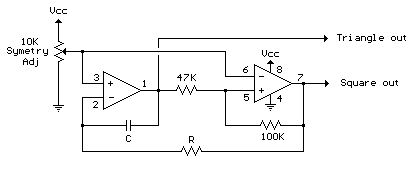
Rotating Sprocket Wheel Generator

The 16F84 has 13 outputs. All 13 can serve as inputs, but only 12 are normal outputs, one is an open-drain. An open-drain output has no active pull up - you have to provide an external (passive) pull up. Since the F84 is CMOS based, this leaves us 12 outputs that have good, low impedance 1's or 0's. We want two channels, 12/2 = 6 bits/channel. Using the rough approximation of 6 dB/bit, 6 bits/channel * 6 dB/bit gives us approximately 36 dB/channel of dynamic range.
The PIC16F84 microcontroller is a versatile device characterized by its 13 I/O pins, which can be configured as either inputs or outputs. Out of these, 12 pins function as standard digital outputs capable of driving loads with low impedance, ensuring reliable signal integrity. The 13th pin operates as an open-drain output, necessitating the use of an external pull-up resistor for proper functionality. This configuration allows for flexibility in circuit design, particularly in applications where multiple devices may share a bus line.
In a typical application utilizing the 16F84, the requirement for two channels, each capable of handling 6 bits, leads to a total of 12 bits. The dynamic range of each channel can be approximated as 36 dB, derived from the calculation of 6 dB per bit. This dynamic range is critical in applications such as audio processing, where signal fidelity and noise performance are paramount.
For optimal performance, it is essential to consider the external components associated with the open-drain output. The choice of pull-up resistor value will significantly influence the switching speed and power consumption of the circuit. A lower resistance value will provide faster transitions but may increase power dissipation, whereas a higher value will reduce power consumption but can slow down the signal rise time.
In designing the circuit, attention should be paid to the layout and grounding practices to minimize noise and ensure stable operation. The use of decoupling capacitors near the power pins of the microcontroller is recommended to filter out high-frequency noise, further enhancing the performance of the circuit.
Overall, the PIC16F84 microcontroller's architecture offers a robust platform for digital signal processing applications, with its combination of standard and open-drain outputs allowing for a wide range of interfacing possibilities.The 16F84 has 13 outputs. All 13 can serve as inputs, but only 12 are normal outputs, one is an open-drain. An open-drain output has no active pull up- you have to provide an external (passive) pull up. Since the `F84 is CMOS based, this leaves us 12 outputs that have good, low impedance 1`s or 0`s. We want two channels, 12/2 = 6 bits/channel. Using the rough approximation of 6 dB/bit, 6 bits/channel * 6 dB/bit gives us approximately 36 dB/channel of dynamic range. 🔗 External reference
The PIC16F84 microcontroller is a versatile device characterized by its 13 I/O pins, which can be configured as either inputs or outputs. Out of these, 12 pins function as standard digital outputs capable of driving loads with low impedance, ensuring reliable signal integrity. The 13th pin operates as an open-drain output, necessitating the use of an external pull-up resistor for proper functionality. This configuration allows for flexibility in circuit design, particularly in applications where multiple devices may share a bus line.
In a typical application utilizing the 16F84, the requirement for two channels, each capable of handling 6 bits, leads to a total of 12 bits. The dynamic range of each channel can be approximated as 36 dB, derived from the calculation of 6 dB per bit. This dynamic range is critical in applications such as audio processing, where signal fidelity and noise performance are paramount.
For optimal performance, it is essential to consider the external components associated with the open-drain output. The choice of pull-up resistor value will significantly influence the switching speed and power consumption of the circuit. A lower resistance value will provide faster transitions but may increase power dissipation, whereas a higher value will reduce power consumption but can slow down the signal rise time.
In designing the circuit, attention should be paid to the layout and grounding practices to minimize noise and ensure stable operation. The use of decoupling capacitors near the power pins of the microcontroller is recommended to filter out high-frequency noise, further enhancing the performance of the circuit.
Overall, the PIC16F84 microcontroller's architecture offers a robust platform for digital signal processing applications, with its combination of standard and open-drain outputs allowing for a wide range of interfacing possibilities.The 16F84 has 13 outputs. All 13 can serve as inputs, but only 12 are normal outputs, one is an open-drain. An open-drain output has no active pull up- you have to provide an external (passive) pull up. Since the `F84 is CMOS based, this leaves us 12 outputs that have good, low impedance 1`s or 0`s. We want two channels, 12/2 = 6 bits/channel. Using the rough approximation of 6 dB/bit, 6 bits/channel * 6 dB/bit gives us approximately 36 dB/channel of dynamic range. 🔗 External reference





